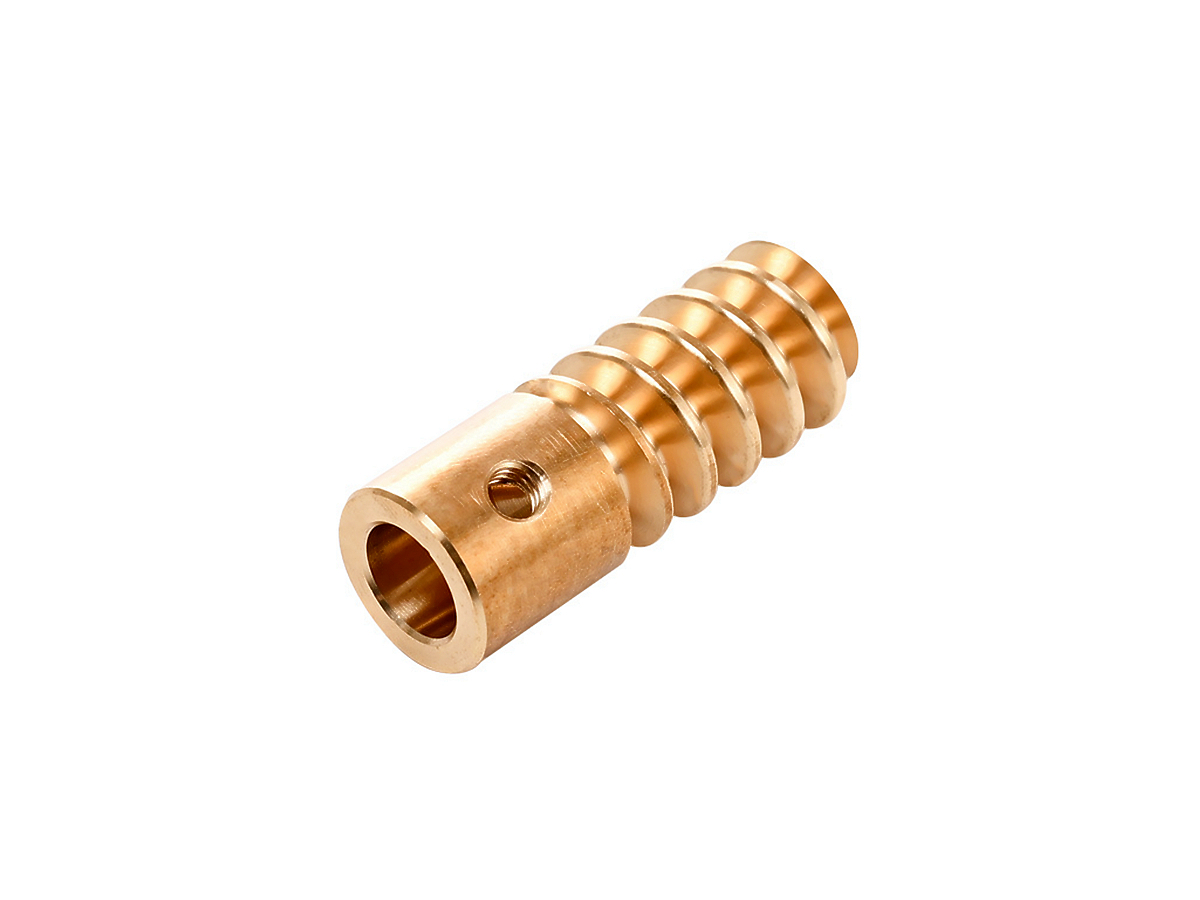Precision Brass C628 CNC Machined Medical Components Low-Volume Production
Introduction
The medical device industry requires materials offering excellent corrosion resistance, machinability, and consistent mechanical properties to ensure patient safety and component reliability. Brass C628, an aluminum bronze alloy, is highly valued in medical applications due to its exceptional corrosion resistance, high strength (up to 690 MPa tensile), good machinability, and antimicrobial properties. These attributes make Brass C628 ideal for precision medical components such as surgical instruments, orthopedic fittings, precision connectors, and medical diagnostic equipment parts.
Leveraging advanced CNC machining, manufacturers precisely fabricate complex Brass C628 components tailored for low-volume production with high precision and repeatability. CNC machining guarantees strict dimensional accuracy, superior surface finishes, and consistent quality, crucial for performance-critical medical device applications.
Brass C628 for Medical Device Applications
Material Performance Comparison
Material | Tensile Strength (MPa) | Yield Strength (MPa) | Corrosion Resistance | Typical Applications | Advantage |
|---|---|---|---|---|---|
620-690 | 240-310 | Exceptional (marine-grade) | Surgical instruments, orthopedic fittings | High strength, antimicrobial | |
340-470 | 170-310 | Very Good | Medical connectors, fittings | Superior machinability | |
480-620 | 170-310 | Exceptional | Surgical tools, implants | Excellent corrosion resistance, biocompatible | |
950-1000 | 880-950 | Exceptional | Orthopedic implants, surgical tools | High strength-to-weight, biocompatibility |
Material Selection Strategy
Selecting materials for medical components involves careful evaluation of strength, corrosion resistance, biocompatibility, and application-specific requirements:
Surgical instruments, orthopedic fittings, and precision medical components requiring high mechanical strength (620-690 MPa), excellent corrosion resistance, and antimicrobial properties significantly benefit from Brass C628, enhancing patient safety and component durability.
Medical connectors and fittings needing exceptional machinability with moderate strength (340-470 MPa) commonly use Brass C360, optimizing production efficiency while ensuring reliability.
Surgical tools, implant components, and critical medical devices demanding exceptional corrosion resistance and biocompatibility select Stainless Steel 316L, ensuring safe, long-term usage in medical applications.
Orthopedic implants, specialized surgical equipment, and lightweight components requiring the highest strength-to-weight ratio (950-1000 MPa tensile) prefer Titanium Grade 5 (Ti-6Al-4V), significantly enhancing durability and performance.
CNC Machining Processes
Process Performance Comparison
CNC Machining Technology | Dimensional Accuracy (mm) | Surface Roughness (Ra μm) | Typical Applications | Key Advantages |
|---|---|---|---|---|
±0.01-0.02 | 0.8-1.6 | Cylindrical fittings, surgical instruments | High precision, rapid production | |
±0.003-0.01 | 0.2-0.6 | Complex orthopedic fittings, diagnostic parts | Exceptional accuracy, complex geometry | |
±0.01-0.03 | 1.6-3.2 | Precision holes, medical connectors | Accurate positioning, fast production | |
±0.002-0.01 | 0.1-0.4 | Precision mating surfaces, medical valves | Ultra-high precision, superior finishes |
Process Selection Strategy
Choosing CNC machining processes for Brass C628 medical components depends on complexity, required precision, and the functional demands of medical applications:
Cylindrical fittings, surgical instruments, and rotational medical parts requiring tight tolerances (±0.01-0.02 mm) efficiently utilize CNC Turning, enabling rapid and accurate machining of precise components.
Complex orthopedic fittings, diagnostic equipment parts, and intricate medical device components demanding high precision (±0.003-0.01 mm) and exceptional surface finish (Ra ≤0.6 μm) significantly benefit from Multi-Axis CNC Milling, achieving complex geometries and superior quality.
Precision holes in medical connectors, fittings, and component housings needing quick, accurate machining (±0.01-0.03 mm) are best produced with CNC Drilling, ensuring efficiency in production runs.
Precision mating surfaces, valves, and critical sealing components requiring ultra-high accuracy (±0.002-0.01 mm) and extremely fine surface finishes (Ra ≤0.4 μm) utilize CNC Grinding, maximizing functionality and performance reliability.
Surface Treatment
Surface Treatment Performance
Treatment Method | Corrosion Resistance | Wear Resistance | Max Operating Temp (°C) | Typical Applications | Key Features |
|---|---|---|---|---|---|
Exceptional (~1000 hrs ASTM B117) | High | Up to 300 | Surgical instruments, precision fittings | Smooth finish, improved biocompatibility | |
Exceptional (~1000 hrs ASTM B117) | Moderate | Up to 200 | Internal medical components | Excellent surface purity, corrosion resistance | |
Outstanding (≥1200 hrs ASTM B117) | Very High | Up to 250 | Orthopedic parts, wear-resistant surfaces | Increased durability, corrosion protection | |
Medical-Grade Coatings (PVD/CVD) | Exceptional (~1200 hrs ASTM B117) | Excellent | Up to 400 | Orthopedic implants, high-wear surfaces | Advanced wear resistance, biocompatibility |
Surface Treatment Selection
Choosing surface treatments for Brass C628 medical components involves careful consideration of biocompatibility, corrosion resistance, and mechanical performance:
Surgical instruments and precision fittings requiring superior biocompatibility and corrosion resistance benefit significantly from Electropolishing, ensuring smooth, hygienic surfaces.
Internal medical components and fittings needing high surface purity and reliable corrosion resistance utilize Passivation, enhancing component reliability and patient safety.
Orthopedic components, surgical tools, and high-wear medical devices benefit greatly from Nickel or Chrome Plating, improving wear resistance, durability, and corrosion protection.
Orthopedic implants and critical device surfaces needing advanced wear resistance and exceptional biocompatibility prefer Medical-Grade PVD or CVD Coatings, ensuring safe and durable performance in demanding medical environments.
Quality Control
Quality Control Procedures
Precision dimensional inspections using Coordinate Measuring Machines (CMM) and optical comparators.
Surface roughness verification using advanced profilometers.
Mechanical property tests (tensile, hardness) per ASTM standards.
Corrosion resistance evaluations following ASTM B117 (Salt Spray Test).
Non-destructive testing (NDT), such as ultrasonic and radiographic inspections.
Comprehensive traceability and documentation adhere strictly to ISO 13485 and FDA manufacturing regulations for medical device manufacturing.
Industry Applications
Brass C628 Medical Device Component Applications
Surgical instruments and precision tools.
Orthopedic fittings and implant components.
Medical diagnostic equipment parts.
High-precision medical connectors and valves.
Related FAQs:
Why is Brass C628 suitable for precision medical components?
How does CNC machining benefit low-volume medical device production?
What medical applications typically use Brass C628 components?
Which surface treatments enhance Brass C628 medical parts?
What quality standards apply to Brass C628 medical device CNC machining?

